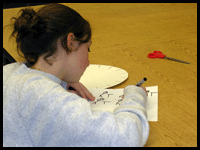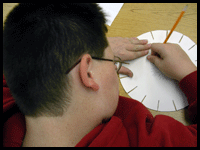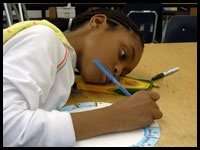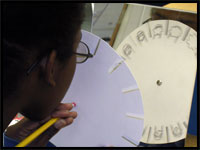Objectives |
||||
|
Phenakistoscope template |
|||
Materials Poster board Scissors Pencils, black markers, colored pen and pencils Mirrors, pencils, and thumbtacks |
||||
|
||||
|
|
|||
Tips:
|
||||
|
||||
|
||||
|
|
||||
Evaluation
|
||||
©
2008 Karin Gunn. All rights reserved. |
|||||||||



